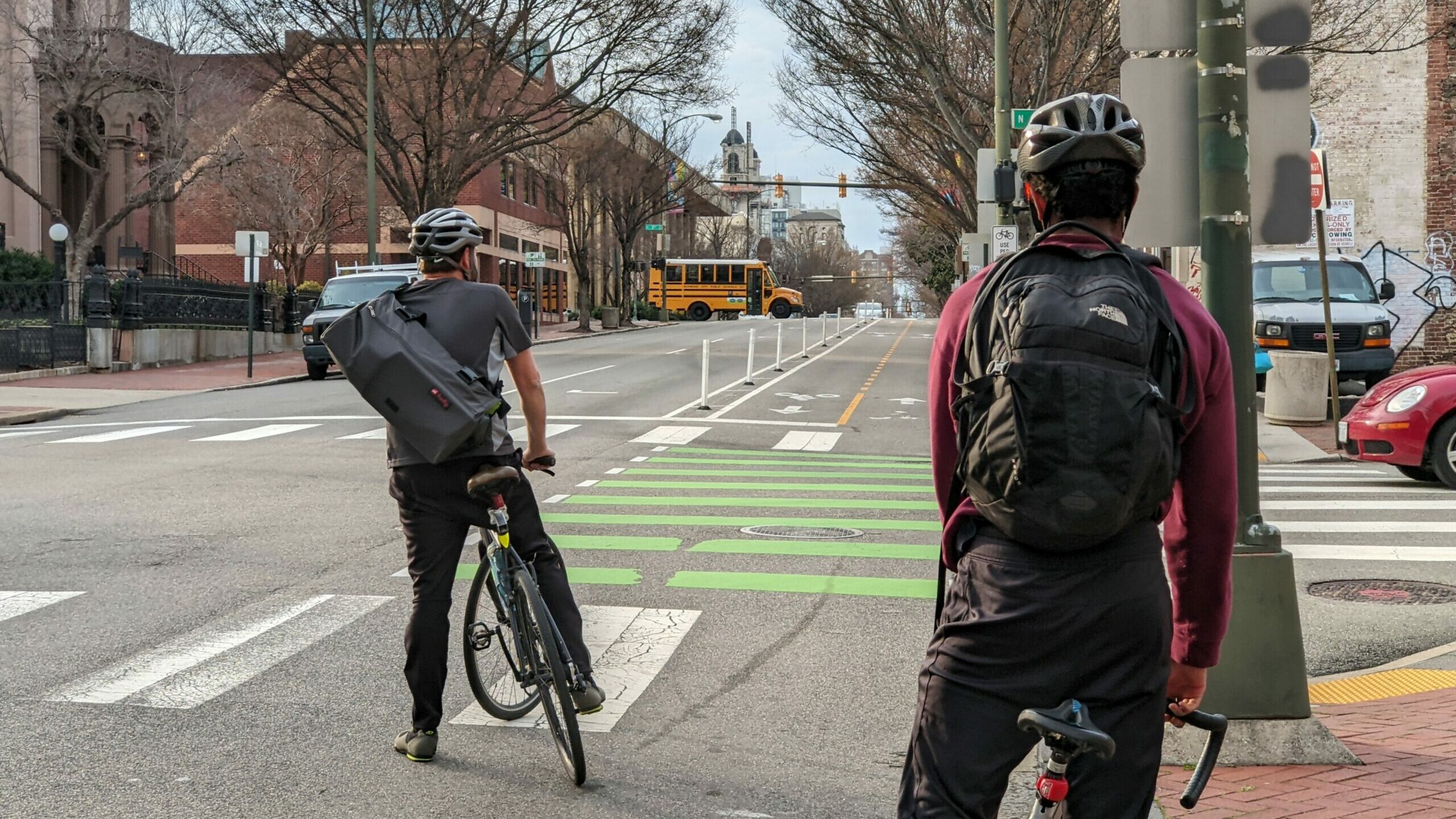Regional Transportation Plan Includes Focus on Improving Pedestrian and Bike Safety

Recent headlines in this newspaper drive home a tragic reality happening along our region’s roadways.
“Henrico crash kills pedestrian.”
“Bicyclist killed in fatal crash in North Chesterfield.”
“Fatal Henrico County bicycle crash underscores increasing number of roadway fatalities.”
From 2010 to 2019, pedestrian deaths in the United States have increased by 45 percent, and the Richmond Region has not been immune. Since 2015, 152 pedestrians and 17 cyclists have been killed on area roads. The victims are among the 3,782 people who died or were seriously injured within the past five years on the region’s roadways.
To the region’s transportation planners, that is exactly 3,782 deaths too many.
Toward Zero Deaths Initiative
When representatives from local jurisdictions released its regional transportation safety plan, it set out an ambitious vision. With a vision of “Toward Zero Deaths,” the plan sets forth a comprehensive roadmap for increasing safety in ways that help ensure that roadway users – including vulnerable roadway users who aren’t in automobiles – get to their destinations without harm. has been adopted by VDOT and the Commonwealth.
The plan has grown out of an in-depth analysis of a wide range of data: crash characteristics, crash locations and the impact of safety improvements. It identified, for example, three culprits behind a preponderance of crashes that result in a fatality: distracted/impaired driving, speeding and seat belt use. Drawing on that information, the nine local jurisdictions collaborated on devising solutions designed to make life-and-death differences on how we can improve roadway safety.

The Virginia Capital Trail in downtown Richmond. Image sources from the Virginia Capital Trail.
Pedestrian and bike safety is a major component of the plan, and it aligns with other regional initiatives, such as, the region’s bicycle and pedestrian plan. Bicycle and pedestrian fatalities in the region from 2015 to 2020 reflect national trends, having increased some 45 percent, and the plan sets forth strategies and investments that underscore a commitment to biking as an important transportation mode, not simply as a means of recreation.
Toward that end, the plan calls for increased investment in bike and pedestrian infrastructure. The success of the Virginia Capital Trail, about to mark the seventh year since its completion, and the significant progress toward the Fall Line trail will provide important east-west and north-south spines from which a growing network of bicycle- and pedestrian-friendly routes can be built. Accommodating the growing popularity of e-bikes and e-scooters is also an integral component of incorporating more sustainable options into our transportation environment.
Employing technology and innovation is part of the plan. VDOT and Richmond’s Department of Public Works is investing close to $60 million to improve hundreds of pedestrian intersections, including some high-visibility crosswalks. Richmond has installed a new kind of traffic-control device called pedestrian hybrid beacons, which reduces pedestrian and cyclist crashes by up to 69 percent. The system includes an array of lights and signals that alert motorists when activated by a pedestrian as they cross the road.
Engineering and roadway configurations – including roundabouts, traffic diverters and other traffic-calming enhancements – will go a long way toward reducing conflict points and lowering speeds, and while there may be no solution for distracted driving or impairment other than educating the public about the responsibilities they have when they get behind the wheel, the physical nature of the roadway and generally slowing vehicle speeds can be the difference between a fatality and a less severe outcome.
When assessing the quality of life of a place, transportation is one of the most essential factors. It impacts equity outcomes, environmental health, physical aesthetics, government expenditures, and physical as well as mental health. The ability of residents to move about reliably, efficiently and safely is critical to our daily lives. This collaboration between local, regional and state transportation planners will go a long way toward ensuring that the Richmond Region will continue to grow in a way that not only helps motorists drive responsibly and respectfully but that enables pedestrians and bicyclists to feel confident in the safety of our roadways.
Subscribe to The Better Together Connector
Sign up to receive The Better Together Connector, a quarterly e-newsletter designed to highlight the latest efforts, successes and a look ahead from PlanRVA, the Central Virginia Transportation Authority, the Richmond Transportation Planning Organization, and the Emergency Management Alliance of Central Virginia.

